On July 4, 1776 in Philadelphia, thirteen colonies in North America declared independence from the United Kingdom, 169 years after the first colony was established. During British rule, not only did these colonies receive an influx of merchants from across the Atlantic, but also convicts, sent away from home to work in plantations all over the east coast of North America. However, the independence of what would become the United States of America brought the convict shipments from Britain to an abrupt end. Scrambling for a new penal colony, in 1787 London sent out eleven ships to the extreme south of the other side of the globe. Eight months after leaving Europe, the ships – known as the First Fleet – arrived in Botany Bay, then Sydney Cove a week later in the southeastern part of Australia known today as New South Wales, marking the beginning of British colonization in the remote continent. These Britons, however, were not the first Europeans to come to Australia.
182 years earlier in 1606, the Dutch became the first Europeans to step ashore on the Australian continent, thus naming the unknown land “New Holland”. In 1770, James Cook – who is also credited for the first European contact with Hawaii – sailed along the east coast of Australia, named it New South Wales, and claimed the land for the United Kingdom. He made contact with the Gweagal clan of the Tharawal tribe who had traditionally been living around Botany Bay near modern-day Sydney for millennia. This marked a period of British-Aboriginal early contacts which resulted in the establishments of a new penal colony as well as conflicts between the Europeans and many Aboriginal groups whose sheer diversity was only properly understood in modern times.
Arthur Phillip, the commander of the First Fleet, became the first governor of New South Wales a few weeks after all 11 ships made landfall. The convicts, marines, seamen, civil officers, and free people onboard the ships built settlements on the new land from scratch, suspiciously watched by the Cadigal people – the indigenous clan who once inhabited what is now downtown Sydney. The British chose to transport convicts out of their home country since capital punishment was failing to reduce the crime rate, and also since their human labor could be harnessed for cultivating cash crops in their colonies. When their sentences had expired, or upon being granted pardons, the former convicts in Australia were able to enjoy the rights of free settlers, including land ownership. The exclusivists (including many free settlers, military officers and civil servants) frowned upon the idea of integrating former convicts into society. On the other hand, these former convicts and other settlers who believed in equal rights were called the emancipists.
The fifth governor of New South Wales, Lachlan Macquarie, was an emancipist himself. The shortage of skills in the colony convinced him to embrace former convicts and appoint those with special talents to important positions. Francis Greenway, an English architect who forged a financial document back home, was transported to Australia in 1814 after having his death sentence commuted. Two years later, while still a convict, Greenway was tasked by Governor Macquarie to design a lighthouse. Soon after the lighthouse’s completion, Governor Macquarie pardoned Greenway and gave him bigger responsibilities including the construction of Hyde Park Barracks.
The increasing number of convicts in Sydney prompted Macquarie to build the barracks in 1819 with the purpose to control, feed and house up to 600 male convicts in the city. In 1822, under the leadership of new governor Sir Thomas Brisbane, many convicts were removed from town, leaving only the most troublesome in Hyde Park Barracks. This was largely due to the British government’s push to cut costs and encourage pastoral expansion in Australia. Less than two decades later the increasing criticism of the convict system led to the closure of the barracks in 1848, amid the rapid growth of commerce and industry in Sydney.
Unlike Sydney, which began as a penal colony, Melbourne was purchased by a businessman called John Batman through a negotiation considered delusive by many. The native Wurundjeri people had been in contact with outsiders even before Batman’s arrival in Port Phillip (present-day Melbourne) in 1835. They gave visitors to their ancestral land a wooden token as a permit to stay temporarily. Batman, who wasn’t aware of this custom, paid flour, blankets, tomahawks, knives, scissors, glasses, handkerchiefs, shirts, jackets and clothes to the Wurundjeri elders instead, in return for 600,000 acres of land. This was only one of many problems that arose between White Australians and the Aboriginal people for more than a century. Smallpox introduced by the British claimed the lives of many indigenous people, many Aboriginal children were snatched from their families for the sake of “assimilation”, and the white settlers’ institutionalized discrimination marginalized Aborigines in their own homeland.
Over seven decades, the White Australian policy was eventually rolled back and completely dismantled. But to ensure that today’s generation will not repeat the same mistakes, Australian museums took a radical approach in presenting the history of the nation: narrating real-life stories and events as they really happened, regardless of how dark and shameful they were. In the Melbourne Museum, apart from sections showcasing the city’s history, one particular exhibition called Bunjilaka was very eye-opening and thought-provoking.
In the beginning James and I were introduced to the diversity of Aboriginal languages spoken in the state of Victoria through interactive buttons. Then a warrior appeared on a screen, inviting us to walk through different periods of time in the history of the Aborigines. The calls of an eagle welcomed us as we entered a dark cave with a kinetic sculpture as the centerpiece. It mimicked the movement of a bird’s wings and changed colors following the story of Bunjil the Creator, the mythical eagle in Victorian Aboriginal mythology. Then as we explored deeper, stories about the way of life for the indigenous peoples before and after the arrival of the Europeans became the focus. Some parts of Bunjilaka forced me to think about the relations between the majority of Indonesia and the Melanesian people in the extreme east of the country. So much homework still needs to be done.
Meanwhile, Melbourne’s Immigration Museum addressed the namesake issue, from the arrival of the Chinese during the gold rush period to the influx of immigrants from a multitude of countries – Greece, Lebanon, Vietnam, and the Baltics to name some – which have shaped the face of modern Australia. A room was designed to emulate real interviews in different periods of Australian immigration policy. A case in the 1920s, for instance, showed how restrictive the racially discriminatory policy was. On the other hand, Sydney’s Hyde Park Barracks provided a sobering view into how life was like for convicts who called this austere building home. Public humiliation and forced labor were a part of daily life until convict transport ceased altogether, followed by greater roles for emancipists in the society. If there is one lesson we can take from the museums in Sydney and Melbourne, it is that equal treatment of human beings, regardless of their racial backgrounds, helps make Australia a thriving nation today. It is so prosperous that our Australian host in Colombo, Sri Lanka two years ago half-jokingly said, “I’m glad my grandfather stole that chicken!”
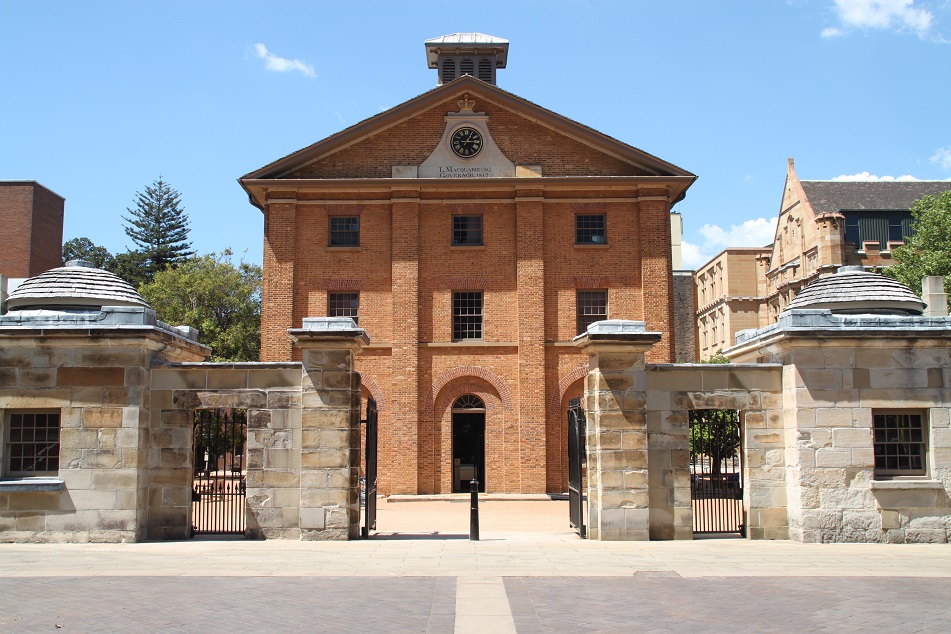






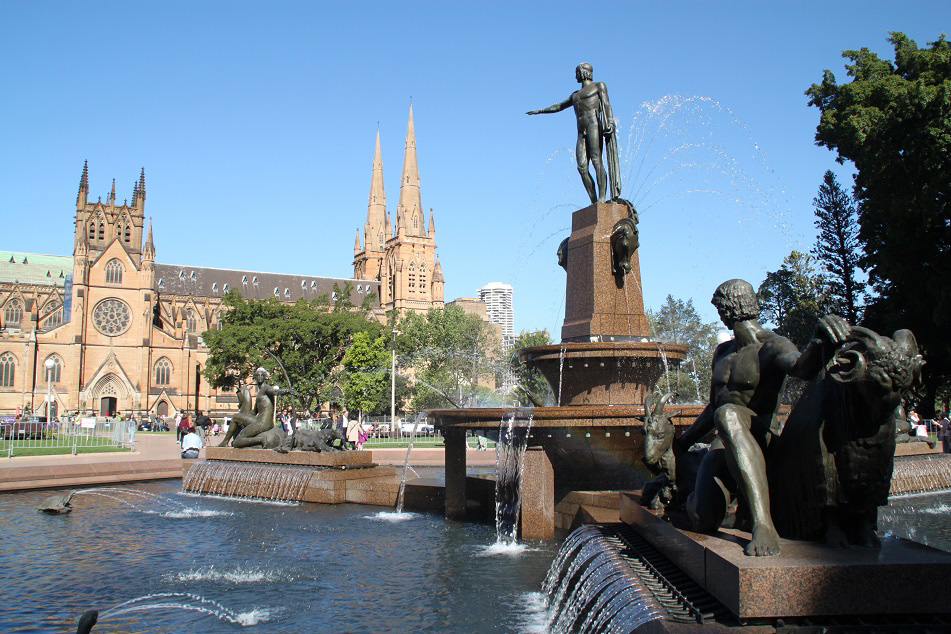




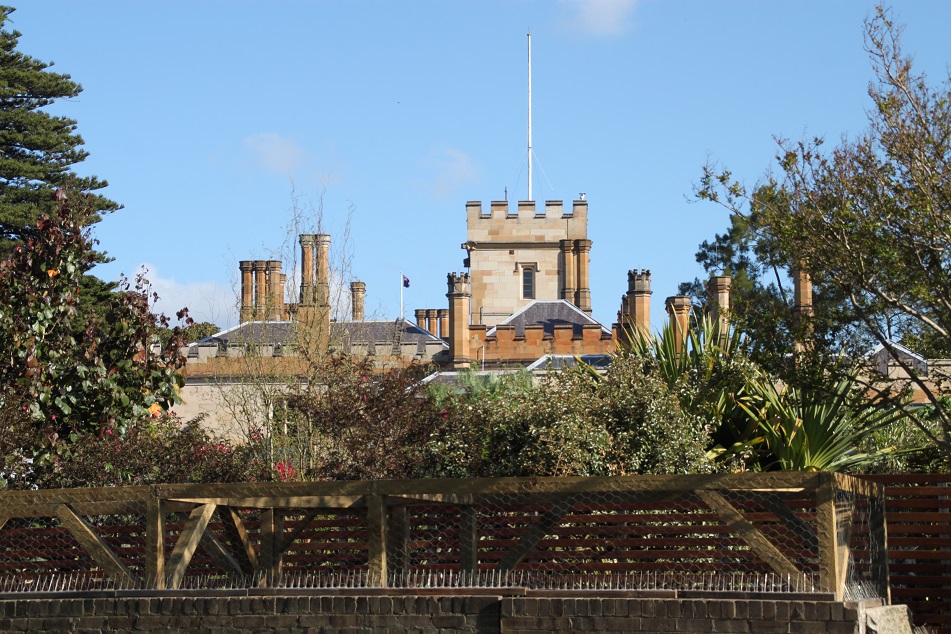

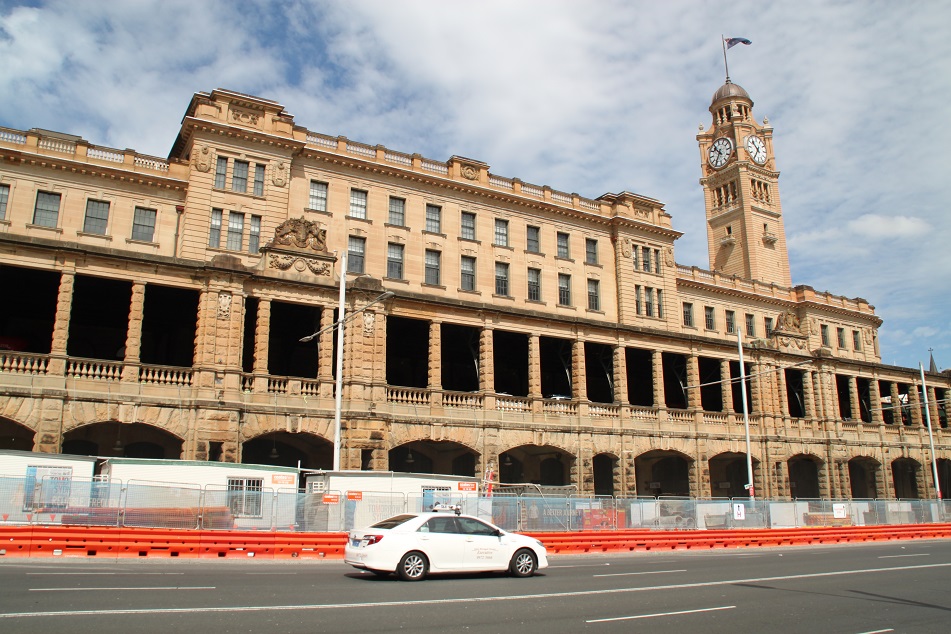
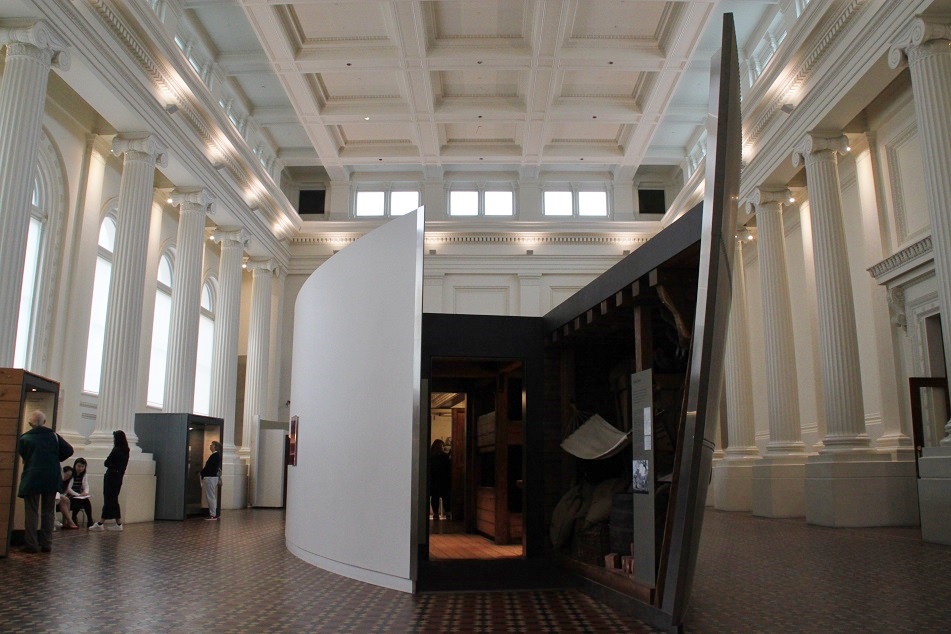


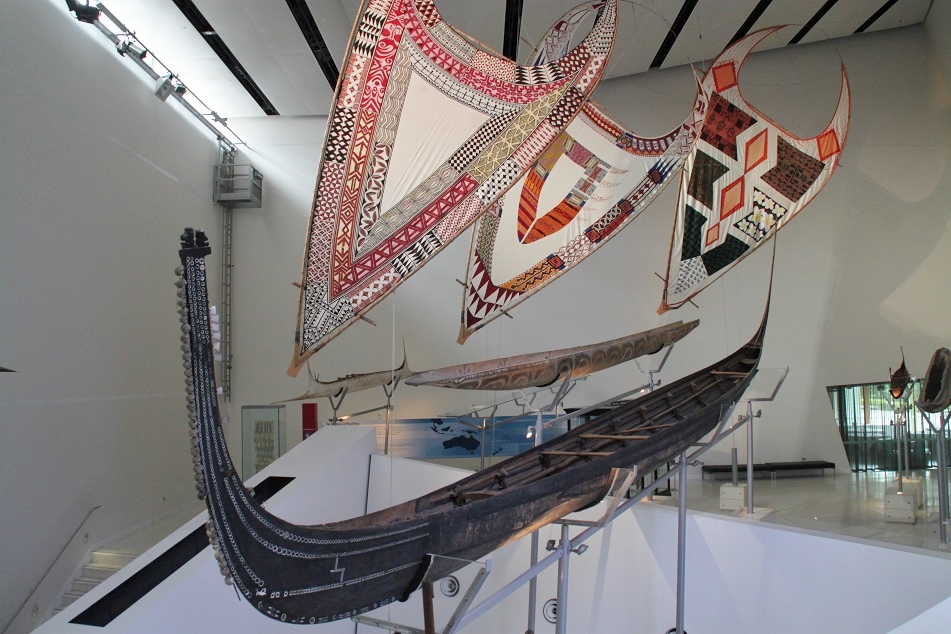
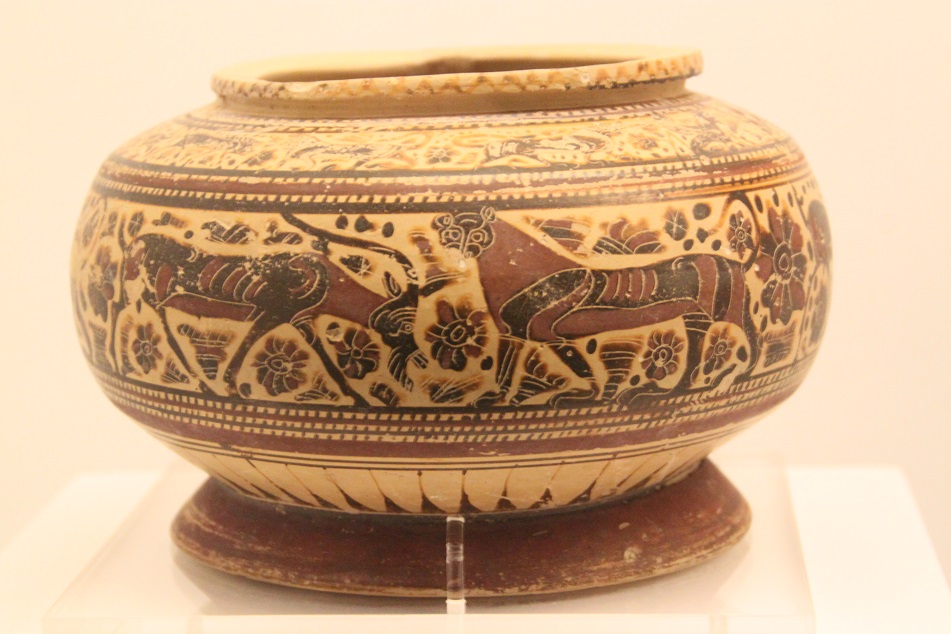


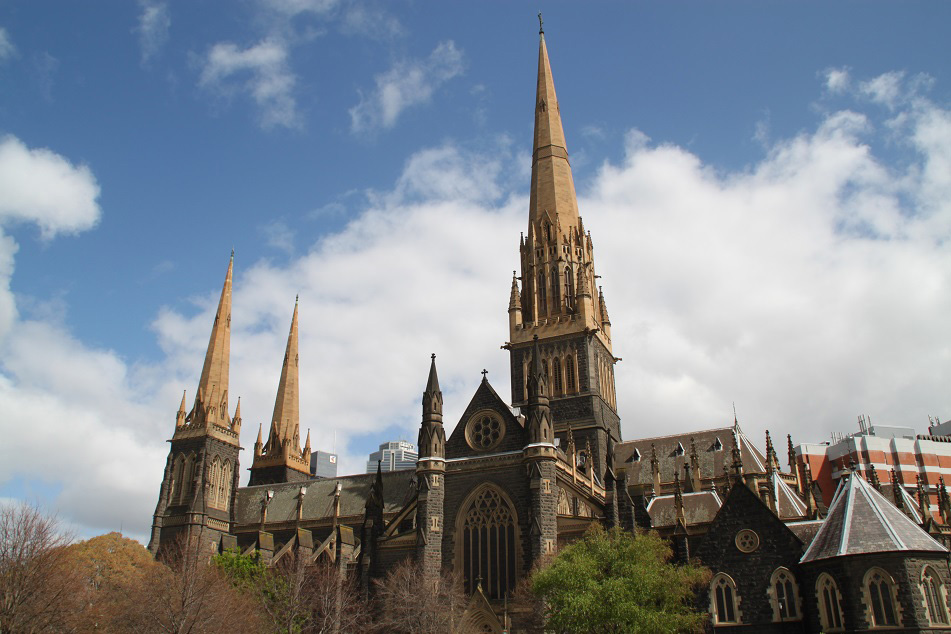


Thanks for this info and beautiful pictures!
LikeLike
And thank you for reading this post!
LikeLiked by 2 people
🙂
LikeLike
Your post is a grim reminder of the terrible times aboriginal people had to endure. What I read on your post on Australia was new to me but is the same sad story that unfolded here in Canada. Discrimination, broken treaties, and the plight of little children being educated away from home in residential schools. Thank you for a very informative post!
LikeLike
Canada and Australia, despite the past mistreatment of their aboriginal peoples, are at least moving toward the right direction. Educating young generation about this as well as ongoing efforts for reconciliation ensure a better future for all. Sadly in some parts of the world aboriginal communities still face discrimination, stigmatization and neglect, exactly the reason why institutions like the Melbourne Museum and the Immigration Museum are very much needed. Thanks for reading, Peter!
LikeLiked by 2 people
Thank you Bama once again for a historical deep dive into a culture we know little about. Fascinating to read about the multiple civilizations that interacted with the aboriginal populations. I had a vague recollection about some penal colony but your blog post provides much appreciated historical information. Very interesting post.
Ben
LikeLike
When I planned this trip, I didn’t expect to learn so much about the history of Australia and its past struggles which shaped the nation as we know it today. Throughout my stay, I had a few contemplative moments, thinking of how so many things still need to be addressed back home in Indonesia — and wondered what kind of contribution I could make, regardless how small it might be. Appreciate your time reading this post, Ben!
LikeLike
The historical details you presented in this post are quite interesting, and it was good to see that Australia is making an effort to tell real stories of all people affected by colonization. Your Canadian reader commented on the problems there, and it was the same in Alaska, where Native Alaskans on the coast were enslaved by Russians partially for the purpose of hunting sea otters for the fur trade. And later the Russians sold Alaska to the US when it wasn’t even theirs to sell. Most enlightening is learning the other side of the story. Thanks for another informative and enjoyable post!
LikeLike
“And later the Russians sold Alaska to the US when it wasn’t even theirs to sell”, while in Melbourne John Batman purchased lands which were not even meant to be sold. I wonder how in Canada and the US the past relations between the White settlers and the native populations are told to the public. I was both impressed and saddened by Bunjilaka at the Melbourne Museum because the story was so beautifully told, at the same time poignant. Thanks for reading, Marilyn!
LikeLike
Great post. Very educational!
LikeLike
Glad you enjoyed this post, John and Susan!
LikeLike
Beautiful photos and looks like you covered a lot in a relatively short time. The White Australia policy may have been abolished, but the racist attitude of the present government still prevails as it did then. We only have to look at the present treatment of refugees now abandoned in Papua New Guinea in a prison the government set up with no water, food, electricity or medical help.
LikeLike
I tried to cover the most important places with such limited time in Sydney and Melbourne. What you said about the government policy reminds me of a conversation I had at Jakarta’s main international airport with an Australian teacher from Adelaide who felt ashamed of how Australia treated refugees. The same sentiment was also echoed by this couple from Perth that I met in a secluded resort in Bali’s northwest more than two years ago. It seems like I’ve only met people from one side of the Australian political spectrum.
LikeLiked by 1 person
My guess is it’s 90% for refugees; 10% against judging by the votes Hanson gained in the last election.
LikeLike
Good point! Speaking of her, I remember this sign on a restaurant not too far from where I stayed in Melbourne which said that the food served there was halal and really good, so much so even Hanson herself liked it. Can’t get enough of Australian sense of humor!
LikeLiked by 1 person
What a brilliant history lesson! Being Australian, it’s easy to forget about how our country came to be, especially because no one really talks about it. But as you said, I think we are moving in the right direction now 🙂
LikeLike
Hi Jess. Thanks for reading! Glad you enjoyed this brief — and hopefully not too boring — history lesson. 😀 Every country has its own dark past, including places where the people are so polite like Japan, or filled with friendly faces like many Southeast Asian countries. However, what makes some countries progress is the way they address their problems in the past. Australia does still have homework to do, but at least from my perspective it is going to the right direction.
LikeLiked by 2 people
Great post. I’ve lived in Australia for a year, and I share your point of view, it’s very interesting how the history is being told now, everywhere you can find exhibitions and displays about those first European settlements and how they changed those people’s lives. So important to tell younger generations what happened with the Aboriginal communities!
LikeLike
Thanks Paloma! I envy Australia in terms of how their young generation is exposed to the truth about the past, instead of believing what the government wants them to believe. Yes, truth hurts sometimes. But covering things up will hurt a nation even more badly in the long run.
LikeLiked by 2 people
Such an interesting post Bama, and wonderful photos. There is still a way to go with reconciliation with the Aboriginal people of Australia, but much progress has been made over the past 30-40 years. And then there’s the hideous mess of Manus Island and the refugees there – a huge humanitarian tragedy on the hands of the Australian Government. Still it’s mostly a good country, and no matter what I’ll always be Australian first no matter where I live. Your friend saying he’s glad his grandfather stole that chicken (probably more like great grandfather!) reminded me of another Aussie. During the Monica Lewinsky scandal in the US, apparently one Aussie interviewed for American TV said “Thank God you got the Puritans and we got the convicts! 🙂
Alison
LikeLiked by 2 people
So glad you enjoyed this post, Alison! True, Manus Island is an embarrassment to the Australian government. But refugee issues aside, I think the world can learn about many things from Australia — including how its gun control successfully reduced gun-related incidents since its introduction. In terms of Australia’s relations with its indigenous population, I really hope things will keep improving, because sometimes in some countries two steps forward can be followed by one step backward.
That Australian host is older than me, but maybe you’re right. It could’ve been his great grandfather who said that. Maybe I should return to Colombo to ask him. 🙂 Alison, I laughed at what that Aussie said on TV. Oh how I love Aussies’ sense of humor! So much so I enjoyed watching the local TV channels during my stay in Sydney and Melbourne.
LikeLiked by 1 person
Yes! Gun control! Oz did well there. It’s such an obvious solution. I love the Aussie humour too. It can be pretty outrageous.
LikeLike
It’s an obvious solution which is apparently hard to comprehend by some folks in ‘Murica.
LikeLiked by 2 people
What a history Australia has,doesn’t it. I loved reading your summarized and simple history of modern Australia. I think it’s remarkable that the country has made tremendous progress in many areas now, and I for one would love to visit or even live there one day.
LikeLike
A lot of progress in Australia was made possible by the political willingness of those in power, as well as the push for change from educated grassroots. If you think of it, it really is impressive that a country once settled by many convicts has now become among the wealthiest countries in the world. It reminds us that giving people a second chance can be really powerful to their lives.
LikeLike
Enjoyed seeing another perspective to this story. I visited similar places in Sydney and Melbourne too and their historical background are so rich, I’m glad the museums are doing their best to do justice to these people. In fact, the immigration museum in Melbourne was a newer museum I visited. Newer because it wasn’t there 6 years ago when I visited but I discovered it when I was in Melbourne last year. I thought it was a good progress for them to dedicate a museum to immigration and their forefathers contribution to the country. Oh and as always, enjoyed the beautiful architecture all around. It brings back memories of my many walks around the city, especially around the Rocks. I especially loved the area there with all the beautiful buildings. 🙂
LikeLike
I’m really curious now about the museums in other Australian cities, because given the great distances among them it would be ideal to have the lessons the museums in Sydney and Melbourne provide easily accessible by the people in, let’s say Perth, Darwin or Brisbane. Thanks for reading!
LikeLiked by 1 person
Wonderful, digestible history lesson, Bama, and I particularly enjoyed the photos from the Melbourne Museum. I sometimes (more often these days) wish my UK relatives had been convicts also, leaving me there instead of here!
LikeLike
Thanks Lex! The US has always been a great country — not perfect, but still great. It’s just these days depressing news seems to come far too often from that part of the world — the latest is that the US is now officially the sole country which opts out of Paris climate accord as Syria and Nicaragua joined the consensus. But I’m sure better time will come sooner than later, depending on how fast Americans want to change.
LikeLiked by 1 person
I’d like to know Australia now, there are much to see
LikeLike
There are absolutely a lot to see in Australia, Malena. Among the places I want to visit the next time I go there are Uluru, Tasmania, Perth, and Brisbane. Hope you’ll make it there too!
LikeLike
Hi Bama this is one of my favorite posts. I am always interested to find out the history from other people’s perspectives rather than what we are usually taught in schools and textbooks. The Melbourne’s Immigration Museum sounds like a place I would like to visit in Australia! I also agree with you that “narrating real-life stories and events as they really happened, regardless of how dark and shameful they were” helps our future generations to understand where they came from and the struggles we’ve had in the past. I always repeat myself what my teacher taught me in Mexico “You don’t know where you’re going, if you don’t know where you came from!”
LikeLike
Really appreciate your kind words, Liz. As a person who has an affinity for anything related to indigenous peoples, I’m sure you would enjoy (albeit at times intrigued) by the Melbourne Museum and the Immigration Museum– there’s so much to see and learn at both museums. Those are really wise words your teacher taught you, because it’s not unusual for people to get lost because they don’t understand about themselves, including where they came from and what values they grew up with.
LikeLiked by 1 person
Thank you for the insightful look into both the Melbourne Museum and the Immigration Museum, they seem like intriguing places to discover the complexity of Australian history. So often only one facet of a country’s history is showcased and it makes for rather dull storytelling. It’s refreshing to see a city embrace its convoluted past honestly.
LikeLike
It’s very encouraging to see the gradual shift of Australian public opinion about immigration and the Aboriginal people. All of this wouldn’t have been possible had good education and open-mindedness not nurtured in the society, something other countries can definitely learn. I thought Australia would only be pleasant, but it turned out fascinating and intriguing as well! Thanks for reading!
LikeLiked by 1 person
Suka banget sama arsitekturnya.
moga suatu saat bisa jalan mondar mandir disini.
LikeLike
Amin, semoga bisa segera kesampaian ya Khairul.
LikeLike
Bama, thank you for sharing this thoughtful and concise post about the history of modern Australia. It’s funny – before our trip there, I had no idea the British shipped convicts to their American colonies. On another note, the level of introspection and open discussion about Australia’s convict past, the suffering of Aborigines, and the White Australia Policy is totally admirable and something that other countries can learn from. Sadly I don’t see that happening anywhere in Asia (except possibly Taiwan) given the overriding importance of face in so many cultures.
LikeLike
Actually I was also surprised to learn about the British convict shipments to their North American colonies — a reminder why we should always visit a museum or two whenever we travel. 🙂 Speaking of introspection, it’s hard to expect Asians to change things at home when many of them travel abroad only for pride — or gengsi as we call it in Indonesia — and not bother to learn anything from the museums in places they go. So sad, really.
LikeLiked by 1 person
Pingback: Sydney’s Symphony | What an Amazing World!
nice article, when i read the article i can feel what happen there
LikeLike
Thanks Asyraf!
LikeLiked by 1 person
you’re wlcome,, i’m waiting for the next article
LikeLike
Pingback: Melbourne’s Alluring Warmth | What an Amazing World!
Pingback: Sydney or Melbourne? The Reveal | What an Amazing World!
Bama, it’s the rare country that doesn’t have dark days and human rights abuses in its history. I suspect that anthropologists attribute the roots of these abuses to tribalism, which every culture has had a some point in the past. As you point out, the good news is that most cultures are being honest about what actually went on, which hopefully will ensure that it never happens again. Good history and great photos as always. We wish you a happy, healthy, and peaceful 2019. ~James
LikeLike
Actually Australia has not been an exception when it comes to forced cultural assimilation as told at Melbourne Museum, and the human rights abuses are ongoing, especially in its treatment of refugees detained on Manus Island. What Australia did right was acknowledging its past transgressions, but there still remains plenty of work to be done.
LikeLiked by 1 person